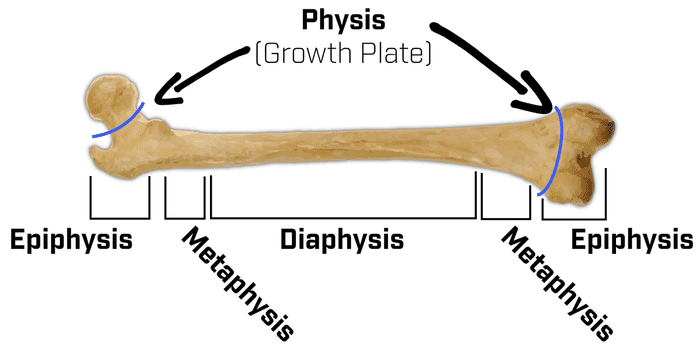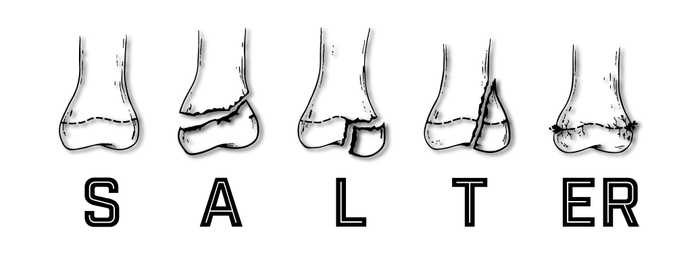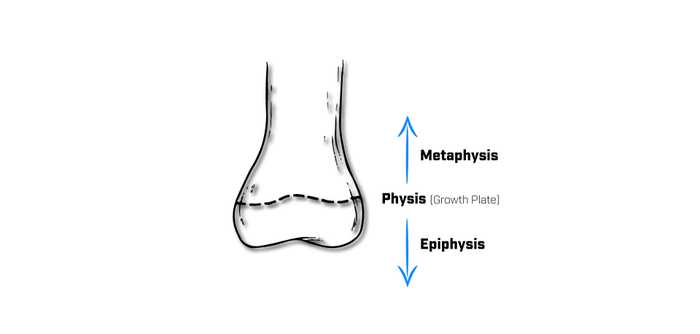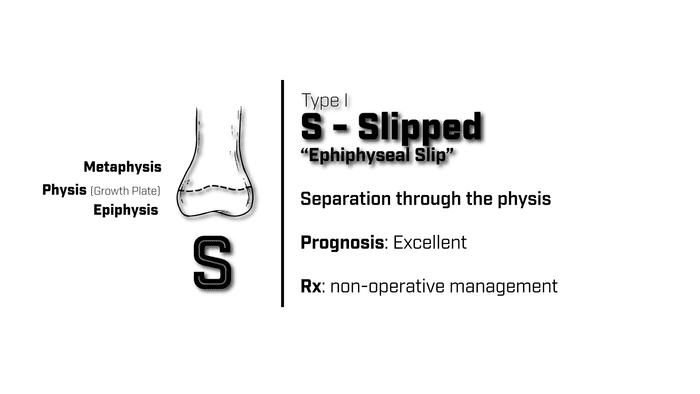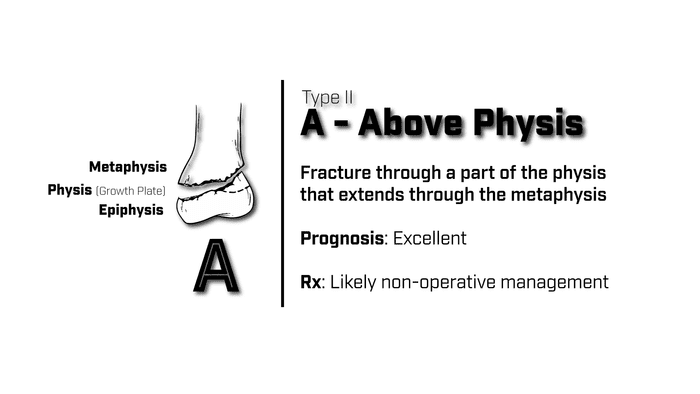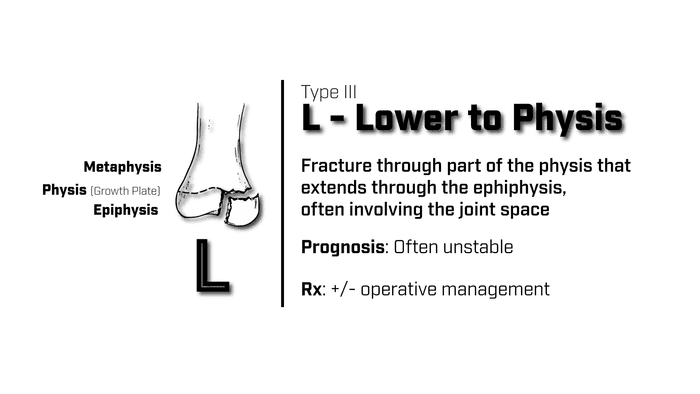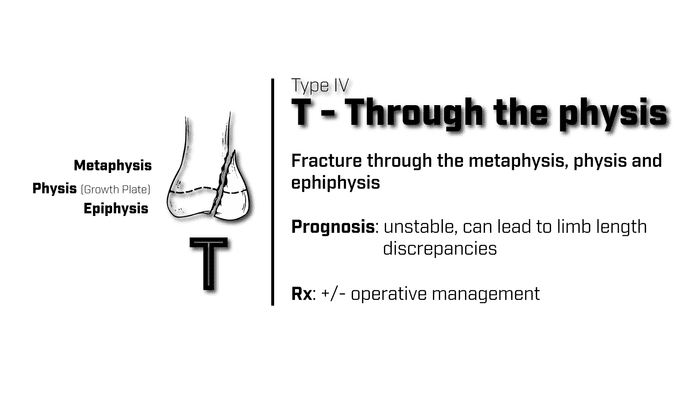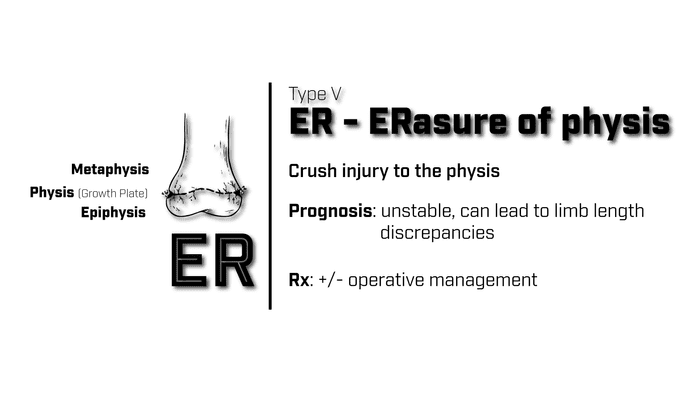NUCLEOTYPE
Salter Harris Fracture Classification
January 06, 2020
Approximately 15% to 30% of all childhood fractures involve the growth plate. Because the growth plate determines the eventual length of your bones, it is important that these fractures be evaluated and treated immediately. Failure to recognize these fractures could result in complications, such as leg-length discrepancies. The Salter-Harris Fracture Classification describes the patterns of fractures that can occur through the growth plate of a long bone. It helps not only with classifying these fractures, but also predicting prognosis and can help with management of these fractures.
Long bones in our body are those that are longer than they are wide, such as the humerus and the femur. They are important in mobility and axial loading of our skeleton. Reviewing the anatomy of a long bone, it is composed to 4 major anatomical parts. There is the diaphysis or the shaft - making up the majority of the bone surface area. The metaphysis, just proximal to the growth plate. The epiphysis at the ends or most distal portions of the long bone. And finally, the physis, aka the growth plate, is located between the metaphysis and the epiphysis. In Salter-Harris fractures, we are concerned about fractures involving the bone just surround to and including in physis.
There are five types of Salter-Harris fractures intuitively classified I through V. The characteristics of these fractures can be easily remembered by the mnemonic: “SALTER”.
The thing to remember about using this mnemonic is that the distal portion of the bone is always facing downward or inferior to the growth plate and the the metaphysis is always superior to the growth plate. This is important because the mnemonic depends on this orientation
Type I Salter Harris Fracture
The fracture in a Type I Salter-Harris fracture is through the growth plate. There is no fracture through the metaphysis or epiphysis. Prognosis is excellent in this type of fracture. You can easily remember this type of fracture by the letter “S” for slipped.
Type II Salter Harris Fracture
The fracture in a Type II Salter-Harris fracture involves the a fracture through the metaphysis along with the physis. Prognosis is excellent in this type of fracture. You can easily remember this type of fracture by the letter “A” for above the physis.
Type III Salter Harris Fracture
The fracture in a Type III Salter-Harris fracture involves the a fracture through the epiphysis along with the physis. These fractures can be unstable and at times requires operative management. You can easily remember this type of fracture by the letter “L” because the fracture is below the physis.
Type IV Salter Harris Fracture
The fracture in a Type V Salter-Harris fracture involves a crush injury to the physis. This is the most severe type of salter-harris fracture and is often unstable, leading to led-length discrepancies. You can easily remember this type of fracture by the letters “ER” for erasure of the growth plate.
Type V Salter Harris fracture
The fracture in a Type V Salter-Harris fracture involves a crush injury to the physis. This is the most severe type of salter-harris fracture and is often unstable, leading to led-length discrepancies. You can easily remember this type of fracture by the letters “ER” for erasure of the growth plate.
